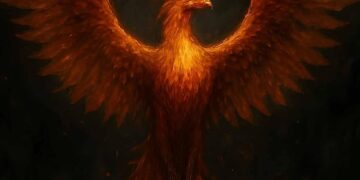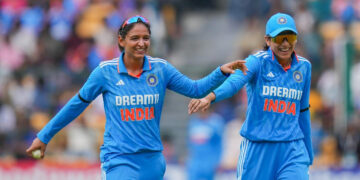A Groundbreaking Discovery in Indian Art and History
Art and history are often intertwined in ways that leave modern scholars and enthusiasts astonished. “The Dual Portrait: Featuring Rajasimha Pallava” by Dr. K. Dakshinamoorthy is one such remarkable exploration into ancient Indian art and architecture. The book unveils a groundbreaking revelation about the Pallava monarch Rajasimha and his enigmatic dual sculpture at the Kanchi Kailasanathar Temple. Dr. Dakshinamoorthy’s meticulous research has led to the identification of this extraordinary artistic representation, which had remained unnoticed for over thirteen hundred years.
The book’s primary focus is on the unique dual sculpture of King Rajasimha at the entrance of the Kanchi Kailasanathar Temple. This discovery is significant because it provides historical, artistic, and cultural insights into the Pallava dynasty’s architectural brilliance. According to the author, the sculpture presents the king in a dual form, gazing at visitors in a way that makes his identification challenging. This form follows a rare sculptural technique known as the ‘dual sculpture grammar,’ similar to representations of Ardhanariswar and Sankaranarayanan—both of which symbolize a blend of divine attributes.
Dr. Dakshinamoorthy’s scholarly approach makes this book a valuable contribution to the study of Indian temple architecture. He meticulously analyzes the artistic nuances of the sculpture, connecting them with historical records and architectural styles of the Pallava period. His argument is well-supported by extensive research, photographic evidence, and references to similar artistic traditions in ancient India.
One of the book’s strengths is its detailed examination of the symbolism behind the dual sculpture. The Pallavas were known for their artistic ingenuity, and King Rajasimha, in particular, was a patron of temple construction. The Kanchi Kailasanathar Temple stands as a testament to the architectural sophistication of his era. By identifying the dual portrait, Dr. Dakshinamoorthy not only sheds light on the king’s self-representation but also offers insights into the broader artistic traditions of the time. The dual depiction serves a purpose beyond mere aesthetics—it reflects the interplay of identity, power, and devotion, which were central themes in Pallava art and architecture.
Another remarkable aspect of the book is its accessibility. While the subject matter is deeply rooted in art history and archaeology, the author presents his findings in a way that appeals to both scholars and general readers. The narrative is engaging, and the discussions are supplemented with clear explanations of technical terms. This makes it an enjoyable read for anyone interested in Indian history, temple architecture, or sculptural art.
However, the book could have further expanded on the implications of this discovery. While Dr. Dakshinamoorthy successfully establishes the historical and artistic significance of the dual sculpture, a comparative analysis with similar artistic techniques in other regions of India and beyond would have added another layer of depth to the discussion. Additionally, a section exploring the possible motivations behind the creation of such a unique portrait—whether religious, political, or personal—could have provided further context to the king’s intentions.
Final Verdict: A Must-Read for History and Art Lovers
Despite these minor limitations, “The Dual Portrait: Featuring Rajasimha Pallava” is a pioneering work that offers fresh perspectives on Pallava art and history. Dr. Dakshinamoorthy’s discovery is not just an artistic revelation but also a historical milestone that contributes to our understanding of South Indian temple architecture. His work emphasizes the importance of continuous exploration in the field of art history, proving that even centuries-old monuments can still hold secrets waiting to be uncovered.
This book is highly recommended for history enthusiasts, researchers, students of Indian art, and anyone fascinated by the legacy of the Pallava dynasty. The discovery of the dual portrait at the Kanchi Kailasanathar Temple is a testament to the depth of artistic expression in ancient India, and Dr. Dakshinamoorthy’s work ensures that this hidden gem is finally brought into the light.


















